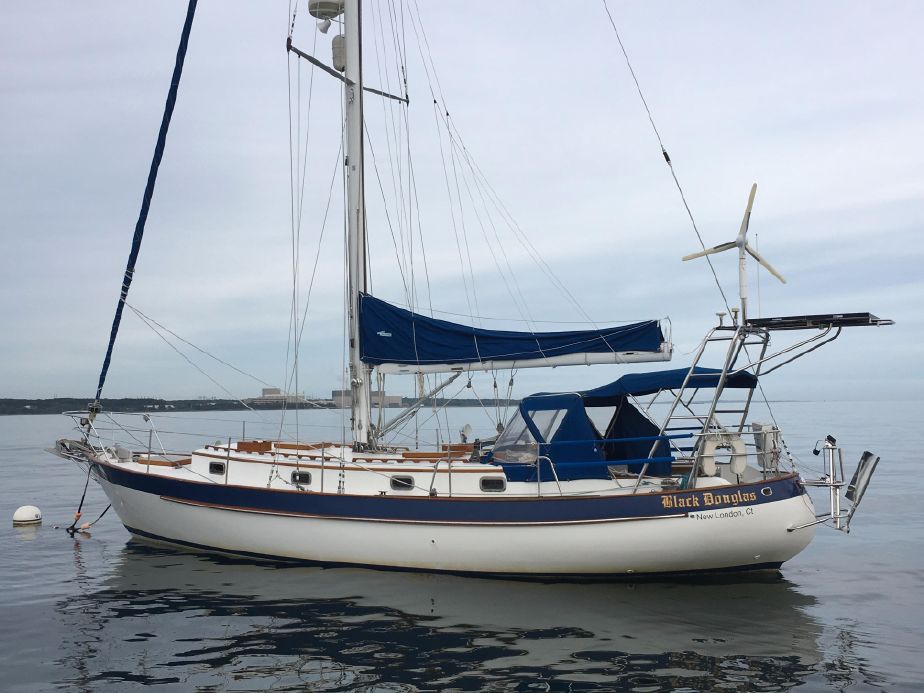
Perhaps no other boat built in the last 25 years has been more glorified or more vilified than the Valiant 40. A 1995 survey by Sail Magazine ranked the Valiant 40 with the likes of the J/24, Laser and Australia II among the boats that had had the most positive impact on sailing over the last 25 years.
Yet, on the other hand, if you were to interview a half-dozen or more cruising boat owners, you would undoubtedly find at least one with a horror story to tell of a Valiant 40 they have heard of, seen or owned which was so riddled with blisters that it was virtually worthless. You may suspect the truth lies somewhere in the middle however; in fact, there is truth in both stories.
When the Valiant 40 was introduced, the term "performance cruiser" must have seemed a bit of an oxymoron. In fact, the Valiant 40 can be credited with putting the word "performance" into this class of yachts that has become increasingly popular over the years. The design can also be credited with launching the career of Bob Perry who has gone on to become one of the more notable yacht designers of the last 25 years.
Perry was convinced that cruising boats did not have to be slow and sluggish in order to be safe and comfortable offshore. He also recognized the aesthetic appeal of traditionally styled cruising boats, and he set out to design a boat that was the best of both worlds. In plan view (looking down from atop) the Valiant 40 has a very traditional shape with full ends nearly elliptical in appearance. In profile, above the waterline, the appearance is a combination of new and old. The straight stem is modern in appearance, the spring of the sheer slightly more pronounced than traditional double-enders, and the canoe stern is very traditional. The box-like trunk cabin also lends to the boat’s traditional appearance.
Below the waterline the story is quite different. The high prismatic coefficient, low wetted surface area, low displacement to length ratio and long waterline more resemble a race boat of the early 1970s than an offshore cruiser of that era.
Between 1973 and 1984 Valiants were built under contract by Uniflite Corp. of Bellingham, WA. In 1984, Valiant was purchased by one of the company’s dealers and moved to Gordinville, TX, where they are today.
Production of the 40 continued, on a limited semi-custom scale, until 1992 when it was replaced by the Valiant 42 model. Actually, the Valiant 40 and the 42 share the same hull. The keel and deck of the 42 have been slightly modified and a bowsprit added to account for the extra two feet. Over the years there were several modifications to the keel, slight changes in ballast and a number of variations on the basic forward cabin, center saloon, aft galley and quarter berth cabin layout.
My space is limited and I do need to discuss the blistering concerns. So, I’m not going to go into the usual details of construction other than to say the hulls are solid fiberglass and plastic resin, the decks are cored, and the method of construction has been in line with what should be expected of an offshore yacht. It is the materials of construction not the method that have caused problems with a number of Valiant 40 hulls.
Often the Valiant 40 problems have been more severe than the typical osmotic bottom blistering associated with many production boats of the 1970s and 1980s. My experience has shown a number of Valiant 40 models built by Uniflite between 1976 and 1981 to have severe blisters of the fiberglass laminates, some as large as eight inches in diameter.
Initially the blistering problem was blamed solely on fire retardant resins used by Uniflite. Later research has shown that a combination of sizing used on fiberglass strands chemically reacts with the fire retardant resins resulting in the blisters. This has the potential to be considerably more serious than typical osmotic blisters restricted to areas near and below the waterline. The Valiant blisters affect the entire hull. Most attempts at repair I am familiar with have been unsuccessful, and blisters have redeveloped in as little as two years.
I have heard of several successful repairs, although the solutions can cost well in excess of $12,000. On the positive side, there were 200 Valiant 40s built, and less than 20% have been reported to have severe blistering problems. I do not know of any reported sinking or catastrophic failure resulting from these blisters.
The Valiant 40 has a true cutter rig, and generally speaking, sails and balances very well on all points of sail. There is one Achilles heel that becomes apparent when beating to weather in choppy seaway. In a self evaluation of his own design, Perry once wrote that; "The fineness in the bow quickly gives way through flare to a broad deck, producing a very dry boat but a boat that isn’t at its best in a steep chop." By some accounts Mr. Perry was being kind. Several years ago a friend sailing a Valiant 40 to the Virgin Islands from Florida reported the noise from the pounding so severe that he could not sleep.
The Valiant 40 has certainly proven her mantle as a capable offshore cruiser with numerous circumnavigations to her credit. On more than one occasion, circumnavigation has been single-handed. Her 6’3" for some shoal draft models) draft makes for less than an ideal gunkholer for Chesapeake Bay cruising. Her accommodations are very livable for long range cruising, and her performance, under most sailing conditions, is superior to many traditional offshore cruisers.
Reviewed in the June 1999 issue of SpinSheet by Jack Hornor




